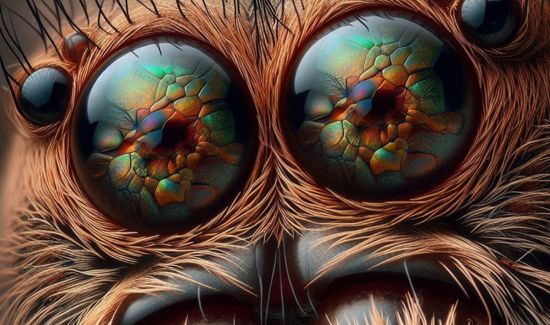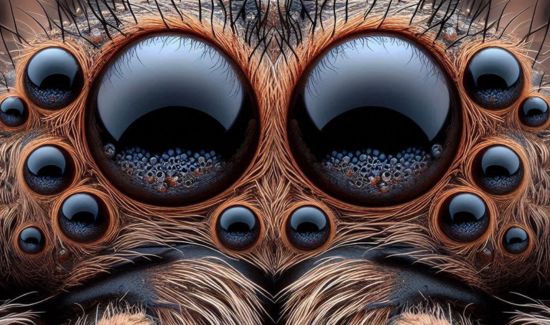Introduction
Table of Contents
Tarantulas are one of the most intriguing creatures in the animal kingdom, often admired for their size, color, and mysterious nature. But what truly sets them apart is their eyes. Tarantula eyes may not seem like much at first glance, but they hold fascinating secrets that help these spiders survive in the wild. In this article, we’ll dive into the details of tarantula eyes close up, exploring their unique structure, vision capabilities, and how they compare to other spiders. Whether you’re a budding arachnologist or just curious about these eight-legged creatures, this article will give you a deeper understanding of the world through a tarantula’s eyes.
What Makes Tarantula Eyes Special?
The Structure of Tarantula Eyes
Tarantulas have a unique eye structure compared to many other creatures. Unlike humans, who rely heavily on vision, tarantulas have several pairs of simple eyes, known as ocelli. These eyes are arranged in a pattern on their heads, usually in two rows. A tarantula typically has eight eyes, but some species may have fewer.
- Primary Eyes: The larger pair of eyes located at the center of the tarantula’s head are called anterior median eyes (AME). These are the primary eyes and provide the most accurate vision, though still not very detailed.
- Secondary Eyes: Surrounding the primary eyes are the secondary eyes (lateral eyes), which include the anterior lateral eyes (ALE), posterior median eyes (PME), and posterior lateral eyes (PLE). These eyes help the tarantula detect movement and light changes.

How Do Tarantula Eyes Function?
Tarantula eyes are not as powerful as human eyes, but they serve their purpose well. The primary eyes can detect prey and movement directly in front of the tarantula. However, these spiders primarily rely on vibrations and their sense of touch rather than vision. The secondary eyes are more sensitive to light and help the tarantula sense danger or movement from different directions.
The eyes are covered with a thin layer of chitin, a tough material that protects them from damage. Despite their number of eyes, tarantulas have poor vision and can’t see detailed images like humans. They rely more on other senses to navigate their environment.
Tarantula Vision vs. Other Spiders
When comparing tarantula eyes to those of other spiders, such as jumping spiders, the difference is clear. Jumping spiders, for example, have excellent vision and can see color. Tarantulas, on the other hand, see mostly in shades of black and white and have blurry vision. This is because their eyes are more adapted to detecting movement rather than forming clear images.
Why Tarantulas Don’t Need Sharp Vision
In the wild, sharp vision isn’t essential for tarantulas. These spiders are nocturnal hunters, relying on the cover of darkness to catch their prey. Instead of chasing after their prey like some spiders do, tarantulas use their senses of touch and vibration to ambush their prey. Their eyes, while not the sharpest, play a supportive role in detecting changes in light and shadows.
The Importance of Tarantula Eyes in Survival
Tarantula eyes might not provide the best vision, but they are crucial for survival. By detecting movement and light, these eyes help tarantulas sense predators and other dangers. The position of their eyes also gives them a wide field of view, allowing them to monitor their surroundings effectively.
Tarantula Eyes Close up and Defense Mechanisms
When threatened, a tarantula can quickly detect a predator through subtle changes in light and movement. Although their eyes aren’t highly detailed, they can still recognize the presence of a threat. This allows the tarantula to either flee or defend itself by rearing up and showing its fangs.
Table: Key Facts About Tarantula Eyes Close Up
| Aspect | Details |
|---|---|
| Number of Eyes | Typically 8 (some species have fewer) |
| Eye Structure | Simple eyes (ocelli), arranged in two rows |
| Primary Eyes | Anterior median eyes (AME), provide most accurate vision |
| Secondary Eyes | Include ALE, PME, and PLE, detect movement and light |
| Vision Quality | Poor, mostly detects light and movement |
| Color Vision | None, tarantulas see in black and white |
| Eye Protection | Covered with a thin layer of chitin |
| Main Use of Eyes | Detecting predators and prey movements |
| Field of View | Wide, due to the positioning of eyes on the head |
| Adaptation | Better adapted for nocturnal hunting and detecting vibrations |
Tarantula Eyes Close Up: A Detailed Look
The Appearance of Tarantula Eyes Close Up
When you examine tarantula eyes up close, you can see the tiny, bead-like structures. Their eyes are typically black and shiny, giving them a somewhat intimidating look. In certain species, the eyes may reflect light, causing a glimmering effect that makes them stand out in the dark.
How Tarantulas Perceive Their Environment
Although tarantula eyes aren’t designed for detailed vision, they play a significant role in how these spiders perceive their surroundings. Tarantulas rely on detecting movement and light, which helps them determine the time of day and potential threats.
Adapting to Nocturnal Life
Being nocturnal, tarantulas have adapted their vision to work best in low light. Their secondary eyes are especially sensitive to changes in light, allowing them to react quickly to any movement around them.
Conclusion
While tarantula eyes may not be as complex as those of other animals, they serve a crucial role in helping these fascinating creatures navigate their environment. By understanding how tarantulas use their eyes, we can appreciate the unique adaptations that have allowed them to thrive for millions of years. Whether you’re observing a tarantula in the wild or simply learning about them from afar, their eyes offer a glimpse into the mysterious world of these amazing spiders.
FAQs About Tarantula Eyes Close Up
- How many eyes do tarantulas have?
Tarantulas usually have eight eyes, arranged in two rows on their heads. - Can tarantulas see well?
No, tarantulas have poor vision and primarily detect movement and light rather than clear images. - Do tarantulas see in color?
No, tarantulas see in black and white. - Why do tarantulas need so many eyes?
The multiple eyes help tarantulas detect movement and light from various directions, aiding in their survival. - Do all tarantulas have the same number of eyes?
Most tarantulas have eight eyes, but some species may have fewer.

